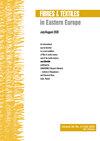Study on the Influence of Elastic Compression Pants Elasticity and Movement Speed on Human Joint Protection
IF 0.9
4区 工程技术
Q3 MATERIALS SCIENCE, TEXTILES
引用次数: 1
Abstract
Abstract The aim of this study was to clarify how human movement speed and pants elasticity affect the athletic performance of knee joint protection by testing pants with different elastic properties: CP1 (tight pants) and CP2&CP3 (elastic compression pants), which reinforce the knee joint. In addition, CS (cotton sport pants) was developed as a control garment. Three subjects wore CP1, CP2, CP3 and CS while running on the treadmill at three kinds of human movement speed. A three-dimensional motion capture instrument was used to capture the three-dimensional trajectory of the marked points of lower limbs. As a result, the influence of the movement speed on the kinematic parameters (AKJ & gait cycle) was more obvious than the fabric elasticity. If elastic pants are worn during running, the change of AKJ will be stable with the increase of speed. When non-elastic pants are worn, the effect is opposite. Not only that, elastic compression pants are efficient in reducing the motion amplitude of the knee joint during the suspension period as far as 41°, making it highly practical in terms of stability. That is, the elastic fabric can protect the joints when the lower limbs are in motion. Moreover, with the increase of speed and elasticity, the elastic pants can reduce the gait cycle by up to 22% compared with non-elastic pants alone. Through the kinematics mechanism of human joints, these findings may translate into an effect on protective performance and a reduction in sport injuries. Therefore, it is necessary to wear elastic pants, especially compression pants, when running at higher speed, as the average gait cycle gradually decreases. This research shows that the knee joint protection functions of elastic compression garments differ according to the level of elasticity and differential movement speed, providing theoretical support for designing and producing elastic compression pants. It also acts as a guide for the research of lower limb joint protection.弹力紧身裤弹性和运动速度对人体关节保护影响的研究
摘要本研究的目的是通过测试具有不同弹性特性的增强膝关节的裤子:CP1(紧身裤)和CP2和CP3(弹性压缩裤),阐明人体运动速度和裤子弹性如何影响膝关节保护的运动性能。此外,CS(棉质运动裤)被开发为对照服装。三名受试者穿着CP1、CP2、CP3和CS在跑步机上以三种人体运动速度跑步。使用三维运动捕捉仪捕捉下肢标记点的三维轨迹。结果表明,运动速度对运动参数(AKJ和步态周期)的影响比织物弹性更明显。如果在跑步过程中穿弹性裤,AKJ的变化会随着速度的增加而稳定。当穿着无弹性的裤子时,效果相反。不仅如此,弹性紧身裤在悬吊期间有效地将膝关节的运动幅度降低了41°,使其在稳定性方面具有高度的实用性。也就是说,当下肢运动时,弹性织物可以保护关节。此外,随着速度和弹性的增加,与单独使用非弹性裤相比,弹性裤可以减少高达22%的步态周期。通过人体关节的运动学机制,这些发现可能会转化为对保护性能的影响和减少运动损伤。因此,当以更高的速度跑步时,随着平均步态周期逐渐减少,有必要穿弹性裤,尤其是紧身裤。研究表明,弹性紧身衣的膝关节保护功能因弹性水平和运动速度不同而不同,为设计和生产弹性紧身裤提供了理论支持。它也为下肢关节保护的研究提供了指导。
本文章由计算机程序翻译,如有差异,请以英文原文为准。
求助全文
约1分钟内获得全文
求助全文
来源期刊

Fibres & Textiles in Eastern Europe
工程技术-材料科学:纺织
CiteScore
1.60
自引率
11.10%
发文量
12
审稿时长
13.5 months
期刊介绍:
FIBRES & TEXTILES in Eastern Europe is a peer reviewed bimonthly scientific journal devoted to current problems of fibre, textile and fibrous products’ science as well as general economic problems of textile industry worldwide. The content of the journal is available online as free open access.
FIBRES & TEXTILES in Eastern Europe constitutes a forum for the exchange of information and the establishment of mutual contact for cooperation between scientific centres, as well as between science and industry.
 求助内容:
求助内容: 应助结果提醒方式:
应助结果提醒方式:


